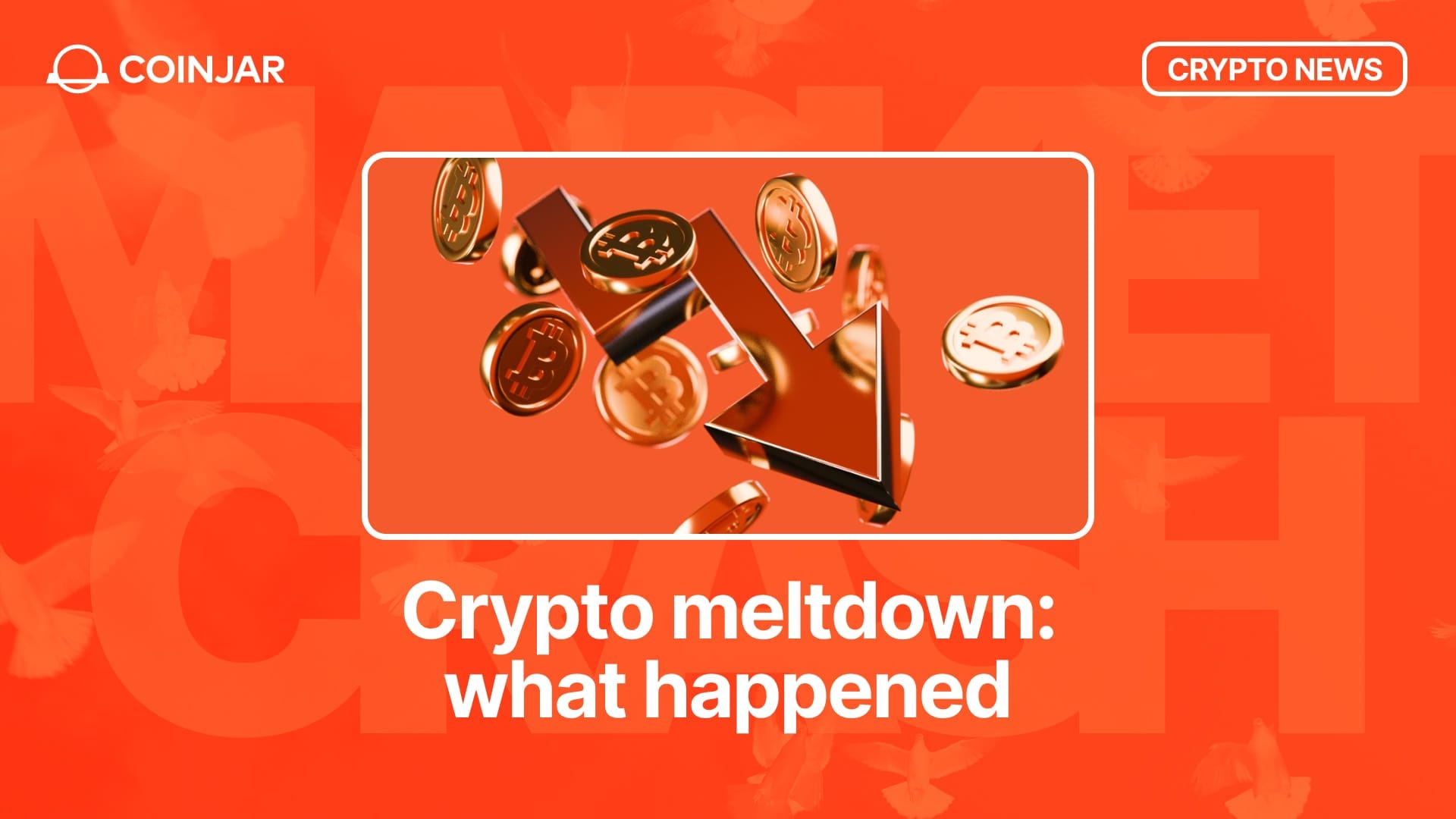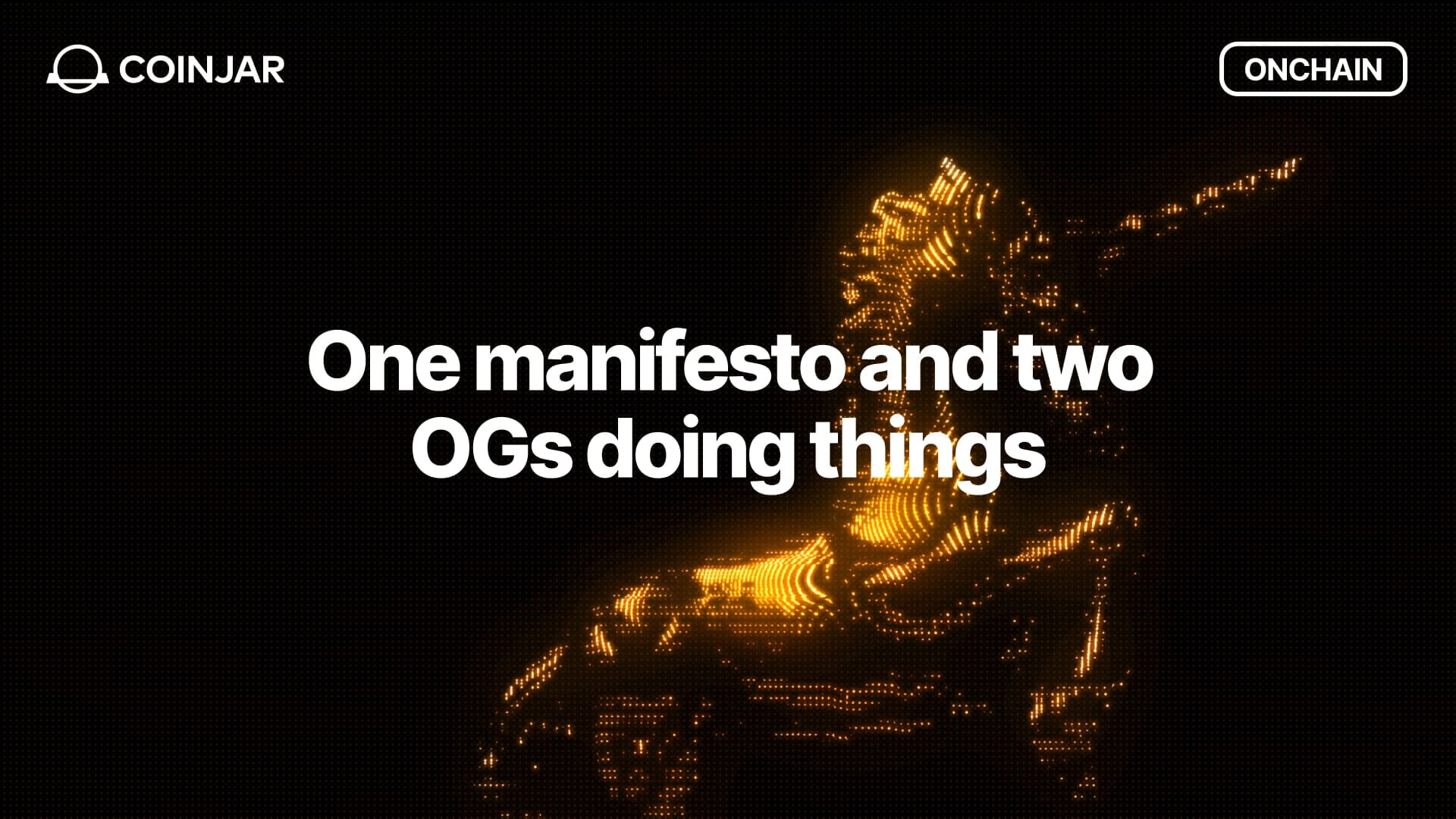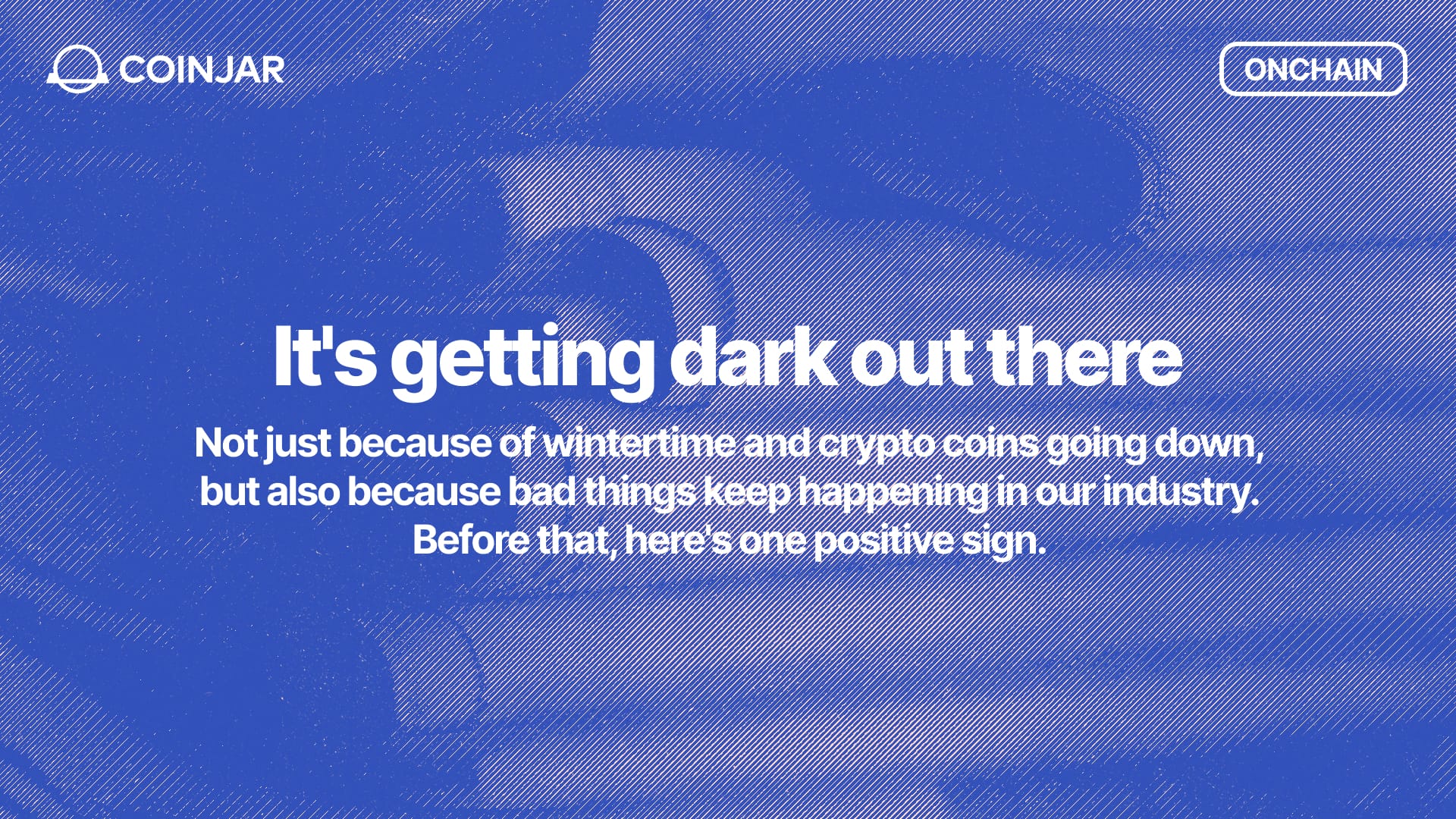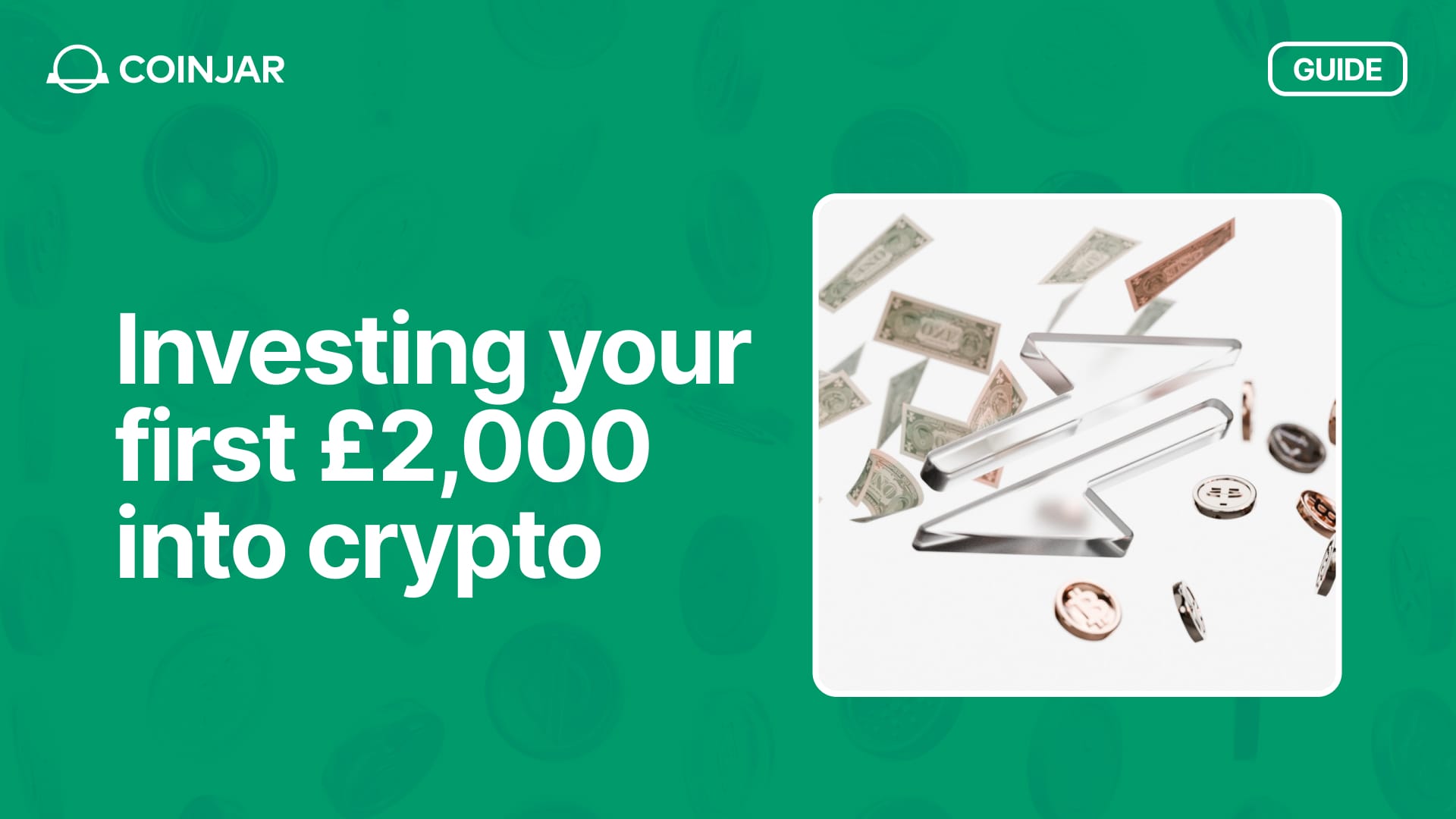Don’t invest unless you’re prepared to lose all the money you invest. This is a high‑risk investment and you should not expect to be protected if something goes wrong. Take 2 mins to learn more.
Weekend Crypto Meltdown: What Happened and Why
October 16, 2025Crypto had a record-breaking volatility party on the weekend and we were all invited. What led to this and where are we at now?
Share this:

Over the weekend of October 10-11, 2025, the cryptocurrency market experienced its biggest liquidation event in history. Approximately US$19 billion worth of leveraged trading positions were wiped out in just 24 hours, affecting over 1.6 million traders worldwide.
To put this in perspective, this crash is up there with previous infamous events like the COVID-19 market crash of March 2020 or the FTX collapse. We will still be talking about this in years to come. So, you may as well find out right now what happened over the weekend so you can discuss it with your little crypto mates.
What Does Liquidation Mean?
Before we go any further, in the UK, leverage tied to cryptoassets is not allowed, so this is only explaining what people abroad are doing that affects Bitcoin price.
Say a USA-based investor wants to buy Bitcoin because they think the price will go up.
They have $100 of their own money, but they want to buy more Bitcoin than that would normally get them. They go to a crypto trading platform that offers loans, and ask to borrow $900 more, so they can buy $1,000 worth of Bitcoin.
This is called 10x leverage. They are controlling ten times more money than they actually have.
The platform agrees, but with one condition: "If Bitcoin's price starts dropping, we'll automatically sell the investor’s Bitcoin before things get too bad."
Things go wrong and the Bitcoin price drops by 10%. The investor’s $1,000 position is now worth only $900. Since they borrowed $900 and only had $100 of their own money, they have lost everything they put in.
The platform says: "We need to protect our $900. We're selling your position right now." This automatic forced sale is called a liquidation.
The Result:
- The investor loses their entire $100. It's completely gone
- The platform gets their $900 back by selling the investor’s position
- The platform usually doesn't lose money.
The Chain Reaction
Now multiply this scenario by millions of people with billions of dollars. When the market starts dropping, it triggers a devastating chain reaction:
- Prices begin to fall
- Thousands of leveraged positions hit their liquidation points
- Platforms automatically sell to recover their loans
- This massive selling causes prices to drop even further
- More liquidations are triggered
- The cycle continues like a snowball rolling downhill.
- You have to move in with your weird uncle because you have lost everything.
What Triggered This Crash
The immediate trigger was geopolitical: President Trump announced 100% tariffs on Chinese imports starting November 1, 2025, along with export controls on critical software.
Even though cryptocurrency is supposed to be independent of traditional finance, it actually behaves similar to a high-risk tech investment.
The domino effect kicks in.
After Trump announced massive tariffs, investors feared a US-China economic conflict.
They sell risky assets (stocks, crypto) and move to safe havens (cash, gold, bonds).
Crypto prices drop sharply. Leveraged traders get liquidated.
The liquidations cause prices to fall even faster.
Markets hate uncertainty, and a trade war between the world's two largest economies creates massive uncertainty about global economic growth.
The scale of destruction was staggering:
Total liquidations: US$19+ billion in 24 hours
Traders affected: 1,618,240 people
Long positions: US$16.7 billion (people betting prices would go up)
Bitcoin alone: US$1.37 billion in liquidations
Ethereum: US$1.26 billion in liquidations
Biggest single trade wiped out: US$87.53 million on one Bitcoin trade.
How Leverage Works When Things Go Right
If the trader's bet pays off, they make enormous profits.
Let’s imagine that you are a crypto trader based in the USA. This is how a winning scenario looks to you: With your $100 and borrowed $900 (10x leverage), you buy $1,000 worth of Bitcoin. If Bitcoin goes up 10%, your position is worth $1,100.
- Repay the $900 loan (plus small fees)
- Keep $200 (your original $100 + $100 profit)
- You doubled your money with just a 10% Bitcoin price increase.
Leverage When Things Go Wrong
The more leverage you use, the faster you can get liquidated.
10x leverage
You put in $100, borrow $900, control $1,000 worth of Bitcoin.
If Bitcoin drops 10%, your $1,000 becomes $900.
You've lost your entire $100 → liquidated.
5x leverage
You put in $100, borrow $400, control $500 worth of Bitcoin. If Bitcoin drops 20%, your $500 becomes $400.
You've lost your entire $100 → liquidated.
2x leverage
You put in $100, borrow $100, control $200 worth of Bitcoin.
If Bitcoin drops 50%, your $200 becomes $100.
You've lost your entire $100 → liquidated.
Who Actually Loses Money?
The trader who used leverage loses their entire collateral (the money they put in). In most cases, they're the only ones who lose real money.
Exchanges and lending platforms typically don't lose money because they automatically liquidate positions before losses exceed the collateral.
Also, they maintain insurance funds for extreme situations, like when the price crashes so fast that the exchange can’t sell fast enough, despite it being automated. This is uncommon however.
The system is designed to protect the lender first.
Where We Are Now
Just days before this crash, Bitcoin had been riding high, pushing past US$125,000 and setting new all-time highs. The rally had been fueled by strong institutional investment through ETFs in the USA, and concerns about traditional currency devaluation.
As of Monday morning, October 13, 2025, Bitcoin is trading around US$115,000. Ethereum on the same day had recovered from around US$3,400 to US$4,100.The market is catching its breath after the violent weekend selloff.
If confidence returns, traders may see current prices as a buying opportunity.
If more bad news emerges or trade tensions escalate, selling could continue.
There could be sideways movement. The market might become fairly stable at current levels while digesting the news.
But of course, this is crypto and it is famous for being volatile, so who knows!
What we Have Learned
For those new to crypto volatility, we have learned a few things this weekend. Leverage trading lets overseas traders control much more money than they have, but it's extremely risky. There could be a big upside, but also that comes with the possibility of a big downside. They need to ask themselves, how much do I want to live with my weird uncle?
A small price drop can wipe out their entire investment when using leverage.
And we have learned that crypto behaves like a high-risk asset, despite being supposedly independent of traditional markets.
Leverage trading is like driving with hitting the accelerator pedal in an EV. Traders can take off fast, but one wrong move and they will be needing to book in their car for crash repairs.
Unfortunately, what traders do overseas, especially USA-based crypto traders, affects the price of crypto for everyone, even if UK traders are not allowed to use leveraged trading on crypto products.
Don’t invest unless you’re prepared to lose all the money you invest. This is a high‑risk investment and you should not expect to be protected if something goes wrong. Take 2 mins to learn more.
Cryptoassets traded on CoinJar UK Limited are largely unregulated in the UK, and you are unable to access the Financial Service Compensation Scheme or the Financial Ombudsman Service. We use third party banking, safekeeping and payment providers, and the failure of any of these providers could also lead to a loss of your assets. We recommend you obtain financial advice before making a decision to use your credit card to purchase cryptoassets or to invest in cryptoassets. Capital Gains Tax may be payable on profits.
CoinJar’s digital currency exchange services are operated in the United Kingdom by CoinJar UK Limited (company number 8905988), registered by the Financial Conduct Authority as a Cryptoasset Exchange Provider and Custodian Wallet Provider in the United Kingdom under the Money Laundering, Terrorist Financing and Transfer of Funds (Information on the Payer) Regulations 2017, as amended (Firm Reference No. 928767).
Share this:
On/Offchain
Your weekly dose of crypto news & opinion.
Join more than 150,000 subscribers to CoinJar's crypto newsletter.
Your information is handled in accordance with CoinJar’s Privacy Policy.
More from CoinJar Blog

Onchain: One manifesto and two OGs doing things
November 19, 2025Story One Wake up babe, new manifesto dropped Why ship app, when you can write manifestos instead, amirite? Or so the Ethereum Foundation & Co. must have thought as they sat...Read more
Onchain: It's getting dark out there
November 5, 2025Not just because of wintertime and crypto coins going down, but also because bad things keep happening in our industry. Before that, here's one positive sign. Story One x402...Read more
£2,000 to Invest? Your First Crypto Portfolio Could Look Like This
October 31, 2025So you've done your dry run buying 20 pounds worth of Bitcoin. Now that you trust the process, what are some ideas for your next move?Read moreYour information is handled in accordance with CoinJar’s Privacy Policy.
Cryptoassets traded on CoinJar UK Limited are largely unregulated in the UK, and you are unable to access the Financial Service Compensation Scheme or the Financial Ombudsman Service.
We use third party banking, safekeeping and payment providers, and the failure of any of these providers could also lead to a loss of your assets.
We recommend you obtain financial advice before making a decision to use your credit card to purchase cryptoassets or to invest in cryptoassets. Capital Gains Tax may be payable on profits.
CoinJar’s digital currency exchange services are operated in the UK by CoinJar UK Limited (company number 8905988), registered by the Financial Conduct Authority as a Cryptoasset Exchange Provider and Custodian Wallet Provider in the United Kingdom under the Money Laundering, Terrorist Financing and Transfer of Funds (Information on the Payer) Regulations 2017, as amended (Firm Reference No. 928767).
Apple Pay and Apple Watch are trademarks of Apple Inc. Google Pay is a trademark of Google LLC.
This site is protected by reCAPTCHA and the Google Privacy Policy and Terms of Service apply.